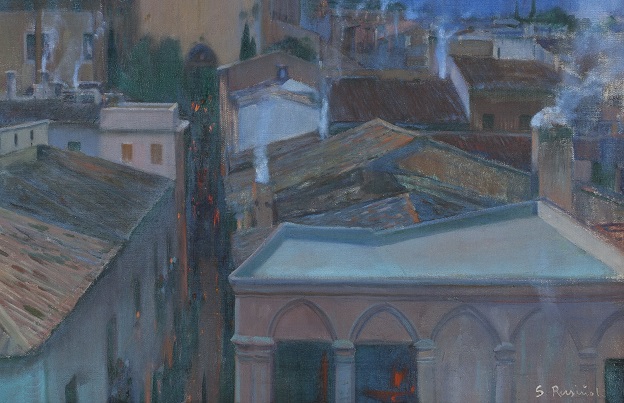Where the Sun stops more than anywhere else and
even Mrs Moon walks more slowly, infected with laziness
Joan Barceló, Michael Douglas, John Lennon, Joan Miró, Charles Chaplin, Agatha Cristie, Anaïs nin, Miguel de Unamuno, Josep Pla, etc. and before all these, Georges Sand with her partner Frederic Chopin. All sitting around the teacher, Ramón Llull.
Mallorca is a very recommendable place to visit, and an even better place to live. It has espectacular scenery, the calm atmosphere, the beautiful weather, the rugged Serra de Tramuntana, and nowadays it is a popular tourists’ destination hotspot, and it all started in 1900.
Barcelona and Palma de Mallorca have a shared history, both cities grew out of its walls more or less at the same time when Barcelona developed the Pla Cerdà, with all the characteristic grid planning and Palma opted for a different plan, but still, it happened just after the one in Barcelona.

City planning and architecture played a unique role in 1900 when both cities expanded, both cities opened up their ancient walls to let the cities grow. In Barcelona, it started in 1841 when Barcelona opens up with the Pla Cerdà, now you get this grid image of Barcelona, and a few years later, Palma also decides to remove the old city walls -a stone belt, they called it- and expand too.
Palma knew that Tourism could turn into an essential income for the island, apart from the traditional farming and fishing. It was the idea of a local entrepreneur, aware of the importance of the new trade of tourism, he thought of building the Grand Hotel in Palma, for the winter tourists escaping from the cold weather. To turn it into a success, the Modernist architect Domenech i Montaner, who worked in Barcelona (Palau de la Musica) was called in for this vital project. Eventually, the exterior was splashed with sculptures by Alfons Jujol, well-known aid to all Modernist architects. To brighten its interior, Santiago Rusiñol and Joaquim Mir were called in.
Rusiñol wasn’t new to the island as he had visited it some years before, he visited in 1893 for the first time, and fell in love with the place, fascinated. Santiago Rusiñol and Mir settled on the island for as long as they needed to finish the paintings ordered by the Grand Hotel. He defined his place in Mallorca as “the place where the good bourgeois goes to rest, during the summer, from what they have been able to do during the winter.”

Pollença (Mallorca), Spring 1902
Oil on canvas
Museu del Cau Ferrat, Sitges. Col. Santiago Rusiñol
This gentleman was the eternal traveller, a people magnet. Sitges, Barcelona, Granada, Madrid, are towns he always knew how to stir the minds of the people that surrounded him. Artists like him were on the discovery of the island, to ponder and share ideas. Gabriel Alomar, Joan Alcocer, Antoni Noguera, William Degouve de Nuncques, Gaspar Terrassa, Bernardino Bernardo de Quirós, Antoni Gelabert…
As an excellent writer, wrote a book, L’Illa de la Calma. It’s a description of the charm of this island, a balm for the soul. Forty-six vignettes designed to call away from the hustle of the cities to the island. It’s known as the best and most heartfelt description of the island that has ever been made: From the distance of the big city of Barcelona, a dirty, polluted and grey metropolis, industrialized, the contrast of was overwhelming.

Known nowadays as a classic landscape painter of gardens and atmospheres, of nature, of light, or water. In the island, he paints portraits of Palma, Pollença, Sóller and, of course, Valldemosa. Just as he also paints Aranjuez or Granada but he is much, much more than a landscape painter.
Next time in Mallorca, get this app called “Walking on Words”, where it takes us on a literary trail through the island, connecting history with the present, architecture with the countryside, cuisine with traditions.
Photo Credits
© Photographic Archive of the Consorci del Patrimoni de Sitges
Bibliography
“7 guided tours in paradise, if you can stand it”. in Walking on words. Online: http://walkingonwords.com/en/
Llauradó, JM. “Visitants il·lustres”. in dBalears, 11/03/2009. Online: https://www.dbalears.cat/opinio/2009/03/11/13620/visitants-il-lustres.html
Canyelles, T. “La familia Sureda, el palacio del Rey Sancho y un invitado de honor”. in Cartuja de Valldemossa, 28/12/2018. Online: https://www.cartoixadevalldemossa.com/category/personajes-ilustres/
Bestard, B. “Santiago Rusiñol y Mallorca”. in Diario de Mallorca, 26/05/2007. Online: https://www.diariodemallorca.es/palma/1543/santiago-rusinol-mallorca/265648.html
Susana Preston, guide and visitors attention for Sitges Museums

Deixa un comentari